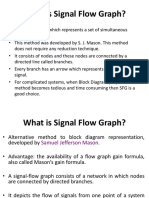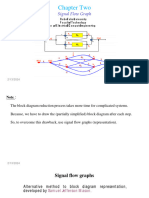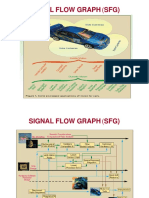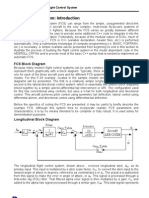0% found this document useful (0 votes)
240 views6 pagesSignal Flow Graph Analysis
The document analyzes a single-port device using signal flow graphs. It contains a circuit diagram with two two-port devices (Sx and Sy) connected by a transmission line and load impedance. It draws the signal flow graph and simplifies it using rules. It then uses the simplified graph to calculate (a) the total current through the load, which is 10 mA, and (b) the power delivered to port 1x, which is 37.5 mW.
Uploaded by
msrchandCopyright
© Attribution Non-Commercial (BY-NC)
We take content rights seriously. If you suspect this is your content, claim it here.
Available Formats
Download as PDF, TXT or read online on Scribd
0% found this document useful (0 votes)
240 views6 pagesSignal Flow Graph Analysis
The document analyzes a single-port device using signal flow graphs. It contains a circuit diagram with two two-port devices (Sx and Sy) connected by a transmission line and load impedance. It draws the signal flow graph and simplifies it using rules. It then uses the simplified graph to calculate (a) the total current through the load, which is 10 mA, and (b) the power delivered to port 1x, which is 37.5 mW.
Uploaded by
msrchandCopyright
© Attribution Non-Commercial (BY-NC)
We take content rights seriously. If you suspect this is your content, claim it here.
Available Formats
Download as PDF, TXT or read online on Scribd
/ 6
































































































